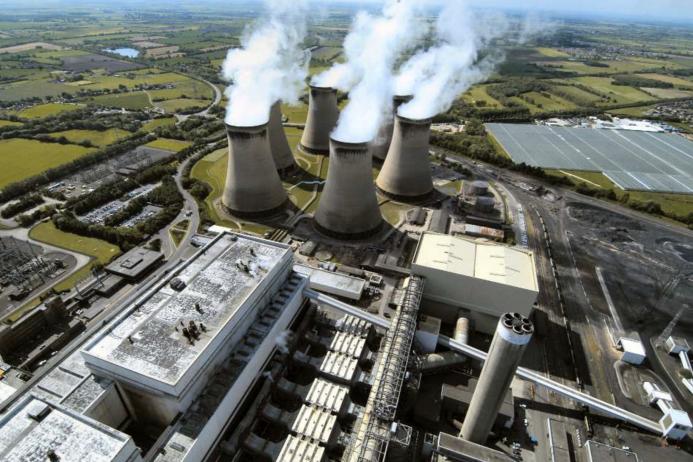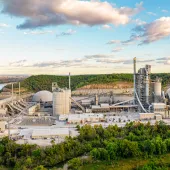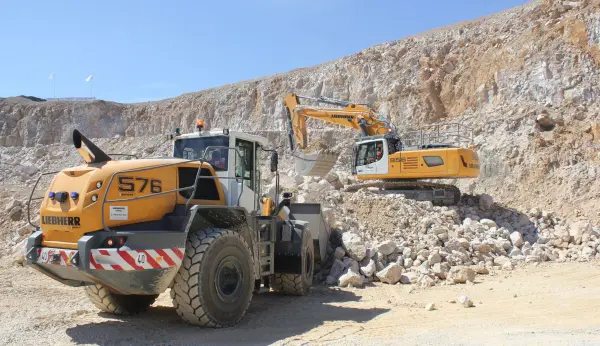Unlocking fly ash stockpiles to create low-carbon cement
UK ready to ‘lead the world’ in harvesting and utilizing valuable legacy stockpiles of CDFA, says UKQAA
PILOT plant tests by the UK Quality Ash Association (UKQAA) have successfully demonstrated that coal-derived fly ash (CDFA), found across the country in huge legacy stockpiles created by decades of electricity generation at power stations, can be processed to meet UK and European standards for use in cement and concrete.
The UKQAA has worked with Coventry-based Atritor and a Titan-owned US-based company – ST Equipment & Technology (STET) – to make use of its respective pilot plants to demonstrate the processing of legacy stockpiles of CDFA. The Atritor pilot plant was used to simultaneously dry and de-agglomerate stockpiles of CDFA and this was then fed into STET’s pilot plant to remove the unburned coal.
Now, two multi-million-pound projects are under way that will unlock millions of tonnes of the ash, some of which has been in the ground for more than 20 years, over the next few decades, turning it into SCMs for use in construction and major infrastructure.
In Yorkshire, Drax has begun a 20-year joint venture agreement with Power Minerals Ltd to develop a state-of-the-art factory to process millions of tonnes of legacy ash into SCM, expected to begin production by the end of 2026.
In Cheshire, TITAN Group are investing in a new facility at the former Fiddlers Ferry power station, which will use their own unique processing technology to process fly ash into SCMs from the site’s lagoons, starting in 2027.
UKQAA director Dr Nigel Cooke said: ‘Following significant investment in testing, we’re now in a position to demonstrate to the Government that we have solutions which fit in with its ambitions for a low-carbon economy. These new projects will create high-quality jobs and offer careers in a business that was considered to be obsolete. The UK can lead the world in unlocking the benefits of legacy stockpiles of CDFA.
‘It’s exciting to see these two huge projects under way, because they illustrate the acceptance of fly ash development in the UK. For many years we’ve talked about the potential of fly ash, but now we’re seeing things coming to fruition. Construction companies and civil engineers are able to see that this is becoming a reality and can now plan projects around it.’
Every tonne of CDFA used to replace cement can save around 760kg of CO2 and around 1.6 tonnes of virgin materials – helping to decarbonize a sector which contributes around 8% of global CO2 emissions annually. It is estimated that the two UK projects at Drax and Fiddlers Ferry could avoid around 500,000 tonnes/year of CO2 emissions from entering the atmosphere.
Over the last decade, the UKQAA, which represents stakeholders involved in the supply or use of CDFA, has helped lay the groundwork for this new era by backing research into the properties of CDFA and lobbying government to ensure ash deposits are protected for future use.
The Government has recognized the need to safeguard the existing legacy stockpiles for use in the construction sector, with CDFA referenced in the latest revision of The National Planning Policy Framework.
Dr Cooke said: ‘By accessing these CDFA deposits, much of the risk of having to import SCMs is removed, such as exposure to exchange rates, shipping costs, and supply-demand balance.
‘Processing legacy stockpiles could potentially contribute up to 50% of our material needs for SCMs for decades to come. Indeed, this figure could be even higher depending on the level of investment in processing capacity. We now have the momentum and there has been a step change in level of energy and interest of those attending our meetings. It will make a massive difference.’
The Government’s 10-year infrastructure strategy aims to deliver a pipeline of major projects to encourage investment, transform procurement to support domestic industries, and help decarbonize infrastructure.
By promoting the use of SCMs harvested from the UK’s legacy coal ash stockpiles in cement, the strategy would further support domestic industries while contributing to decarbonization.
Dr Cooke urged the Government to streamline the planning process: ‘We have the designs, the investment, and the resource – but planning delays are the single biggest barrier to getting started. Every extra study or appeal adds months, sometimes years, and only the largest companies can afford to wait.
‘The Government has recognized the value of this resource – now it must help us turn that recognition into action.’










